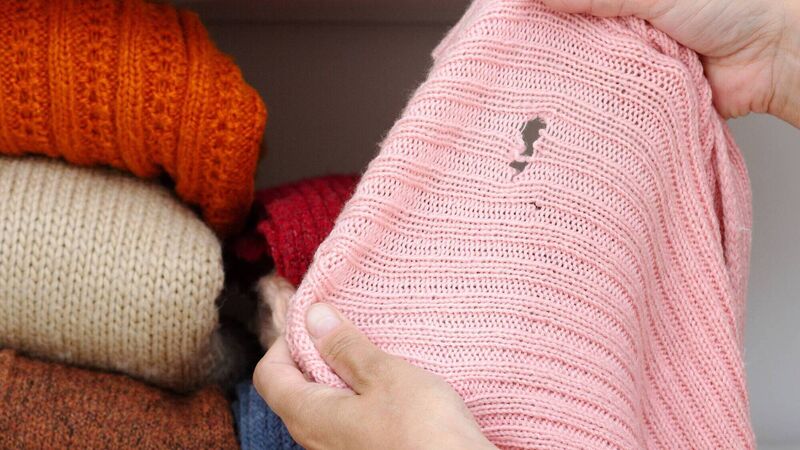Life Hack: How to prevent moths in your home and what to do if you find them in your wardrobe

Prevent moths from making a meal of your favourite jumper with lavender or cedar
I’m not sure about you but I’ve found myself shepherding more than a few moths out through a door or window in recent evenings. The combination of warmer evenings and slightly earlier sunsets means we’ve had a good few flutter into the house, attracted to the lights at night.
Moths are harmless pollinators for the most part but they aren’t a welcome guest in most homes thanks to their larvae’s attraction to fabric. They can damage clothes and other household textiles while in this development stage, eating through silk and wool in particular as well as carpets and leather.
In Ireland, we have around 1,500 species of moth and they play an important part in our landscape, interacting with many plants and animals, according to the National Biodiversity Data Centre. Research from University College London found moths play an important role as pollinators.
“Nocturnal moths have an important but overlooked ecological role. They complement the work of daytime pollinators, helping to keep plant populations diverse and abundant. They also provide natural biodiversity back-up, and without them, many more plant species and animals, such as birds and bats that rely on them for food, would be at risk,” said the study’s lead author, Dr Richard Walton.
If you notice or suspect an infestation of moth larvae in your own wardrobe, the first thing to do is wash the affected clothes. Pop them in a hot wash (anything over 50 degrees Celcius for sheets, towels and other durable fabrics). This will kill any eggs or larvae lingering in the fibres.
If a hot wash is not an option, perhaps for dry clean-only or wool items, there is an alternative. Place the item into a sealed bag and put it into your freezer for at least one week, but a minimum of three days. This will also remove any eggs or larvae.
Moths are attracted to food particles and sweat on clothes, so if you suspect they may be drawn to your wardrobe, don’t return worn clothes to the wardrobe as they will flock to it. Instead, wash your clothes before returning them to the rail, shelf or drawer.
Store out-of-season clothes in sealed bags to prevent moths from making a dent in them before you can notice it the next season. Vacuum-packed bags are particularly useful for this and also function as a space-saving tool for bulky items like jumpers and coats.
Don’t forget to clean your wardrobe itself. Remove all clothes and vacuum the interior of the wardrobe. Wash all surfaces with a cloth soaked with detergent, making sure to reach all nooks and crannies.
To prevent moths from making a home in your favourite jumper and turning it into an all-you-can-eat buffet, it’s worth investing in a few scents they detest. Moths hate cedar and lavender, so keeping a sachet of either with your clothes is an easy option that is nose-friendly for us too. Make sure the scent is strong and replace them when they start to fade to ensure the method stays effective.

Celebrating 25 years of health and wellbeing











